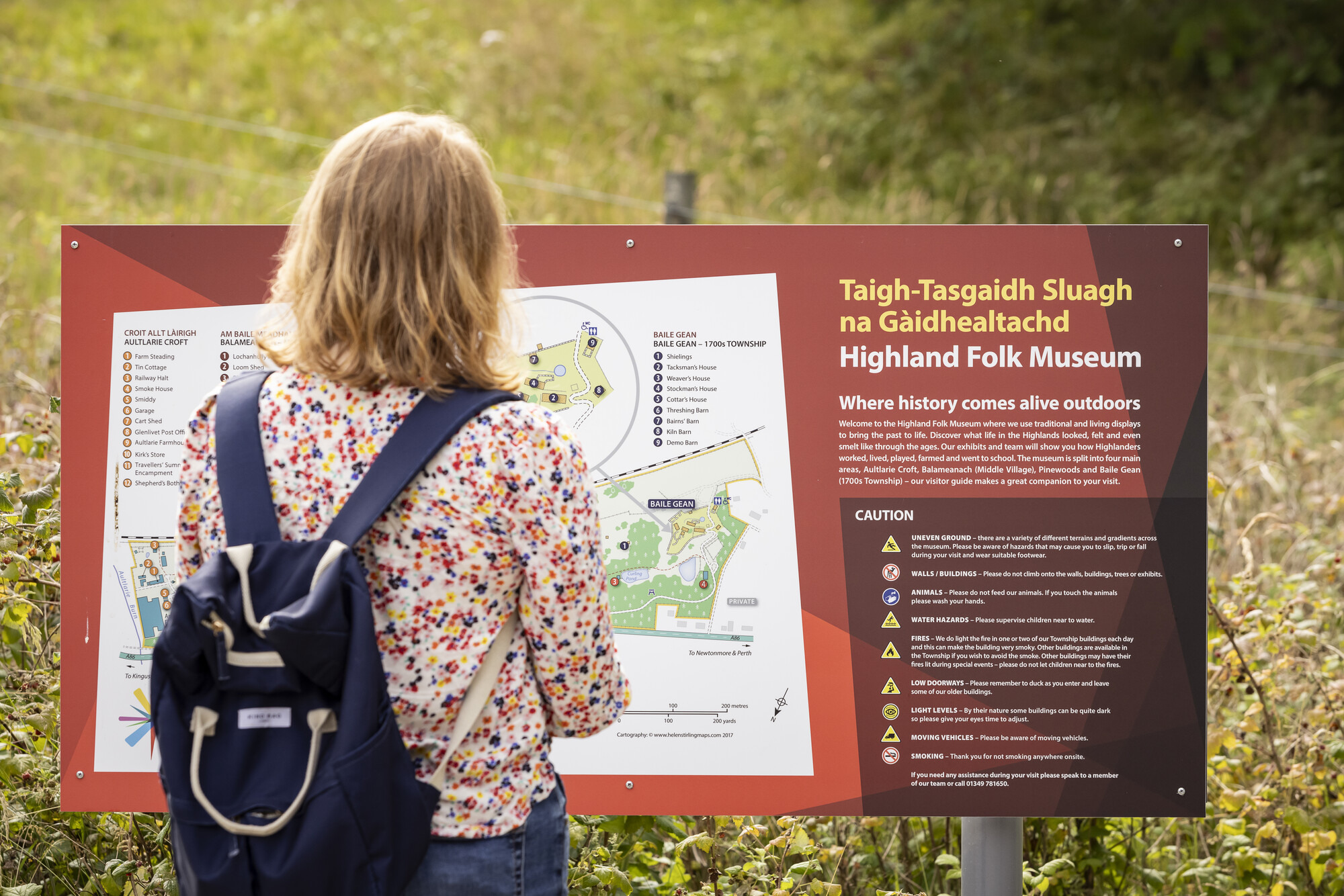Languages

In the Cairngorms National Park, language is embedded into the landscape as much as the granite and heather. It’s woven into every town and village, revealing folk tales and facts alike. While English is spoken universally, three other local languages are still in use: Gaelic, Scots and Doric.
Gaelic
First introduced to the region over 1,000 years ago, Gaelic superseded the Pictish language and culture, remaining the dominant language over the following centuries.
Many of the town and village names in the National Park are Gaelic in origin and offer a glimpse into key place information – from geographical location to local folklore. The River Avon in Gaelic, for example, translates to Uisge Athfhinn, meaning ‘water of the very bright one’. It’s named after Athfhinn, wife of the legendary Celtic warrior, Fionn, who, according to legend, supposedly drowned trying to cross the river. Or take the Gaelic name for the Cairngorms mountain range, Mhonaidh Ruaidh, which describes the russet colour of the hills.
By the late 18th century, Gaelic’s decline had sadly begun. Jacobite uprisings had threatened the throne, so in retaliation, the government banned any use of the Gaelic language, along with kilt wearing and bagpipe playing. The Highland Clearances which followed added to the dispersal of Gaelic culture, as tens of thousands of native speakers were forced to (or in some cases chose to) emigrate. The remaining residents became bilingual, often speaking Gaelic in parallel with Scots or Doric, and sometimes even Norse.
Today, less than 5% of National Park residents speak Gaelic, but its influence is far-reaching, and there are ongoing efforts to reignite its use. In 2005, the Scottish Parliament ruled the tongue an official Scottish language.
Scots and Doric
From the Council of Europe to the Scottish Government, many institutions agree that Scots is a language that needs protected. And happily, Scots is indeed a language back on the rise: it’s used in academic courses, literature and popular culture. Scots is widely spoken in the popular Scotland-based TV series Outlander, for example.
Once Scotland’s official language, the Scots language is over 1,400 years old. It began in the southeast of Scotland following the arrival of the Angles, a Germanic tribe. The language takes many influences, including Dutch, French, Gaelic, Latin and Scandinavian and, over time, developed four main dialects.
It’s the Northern dialect of Scots, also known most commonly as Doric, that you’ll find fluttering off tongues in the National Park. From bosie (hug) to bide (stay), even non-Doric-speaking people might recognise many of the language’s words, which have woven their way into the modern-day vernacular.
It is also through language that people connect to the land, and help others – even from faraway places – to do so too. The Scottish writer and poet Nan Shepherd wrote about the Cairngorms National Park in her mountain memoir, The Living Mountain. Through words, she created vivid imagery of the region's landscapes that have resonated deeply with a global audience. Much more recently, local writer Merryn Glover wrote The Hidden Fires in response to Shepherd’s book and her own experience of the Cairngorm mountains. Other notable writers who have depicted the National Park in literature include Robert Louis Stevenson and Elizabeth Grant.
Related
Archaeology
From hunter-gatherer activities to medieval agriculture, archaeology has helped piece together important historical events in the Cairngorms National Park. Today, the area remains a living history of the diverse communities who called these hills and glens home.
Castles and ruins
The Cairngorms National Park is home to several impressive castles and ancient ruins, from royal Balmoral Castle to military fortresses. Uncover tales of Scottish clans and Jacobite uprisings via these historic sites.







